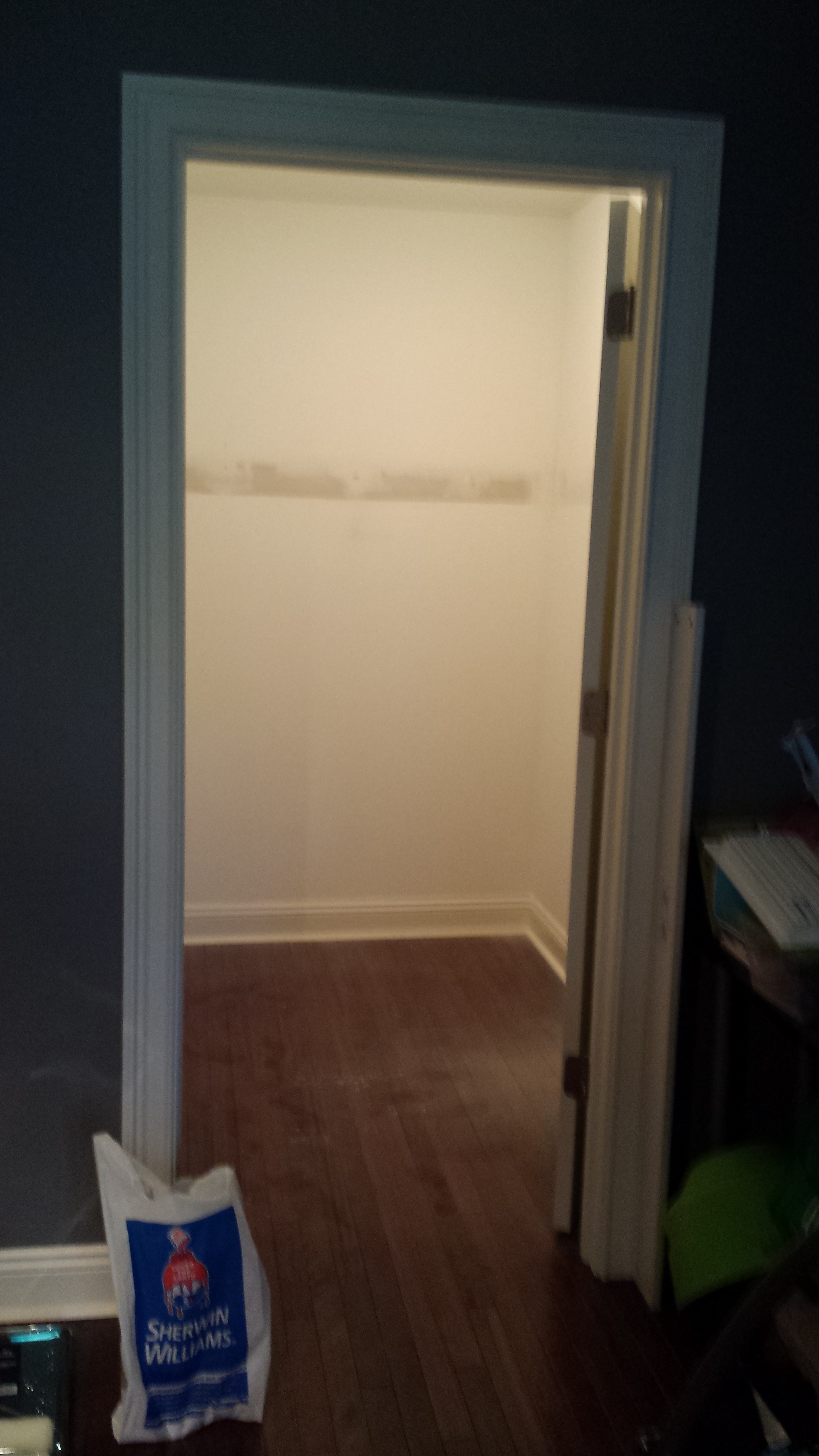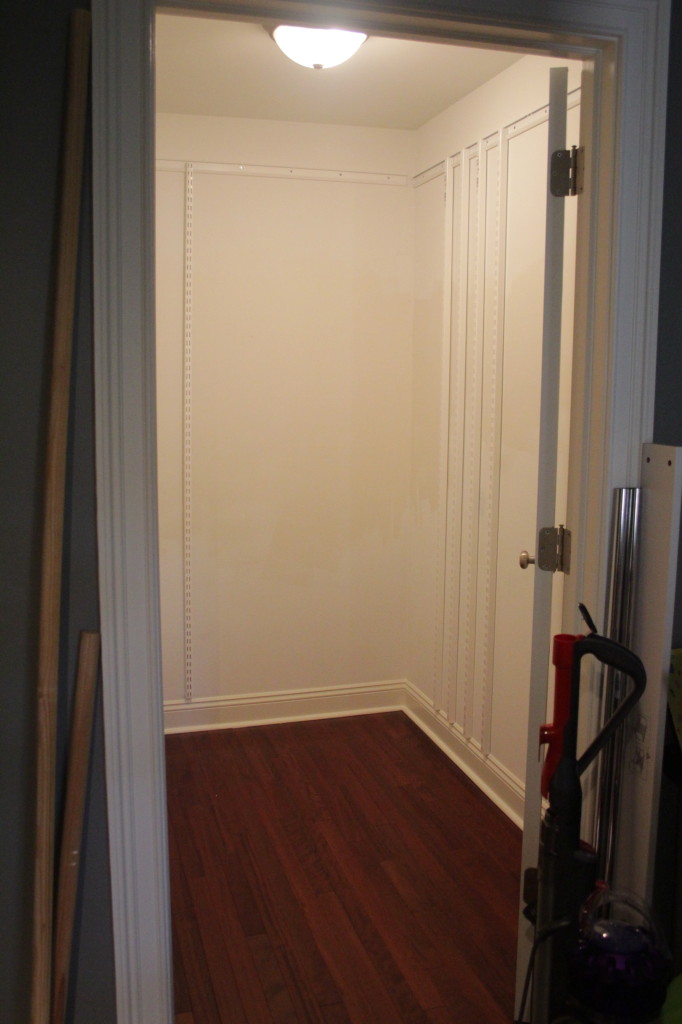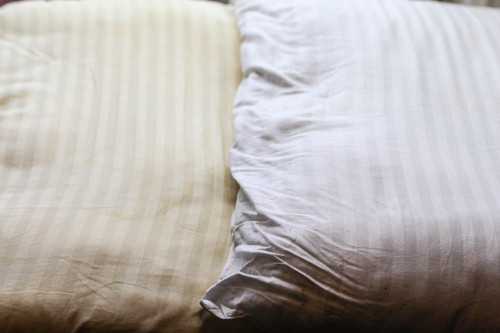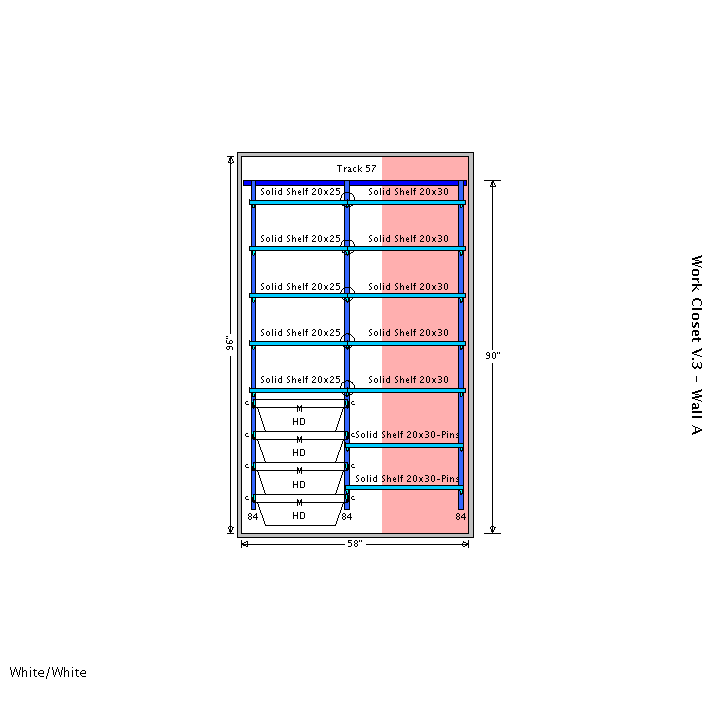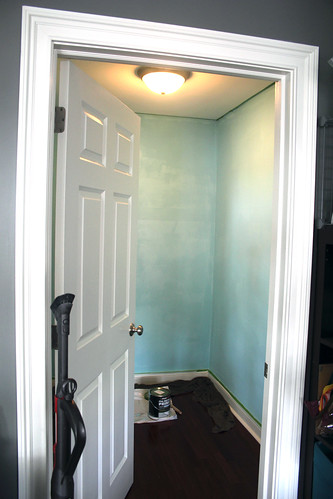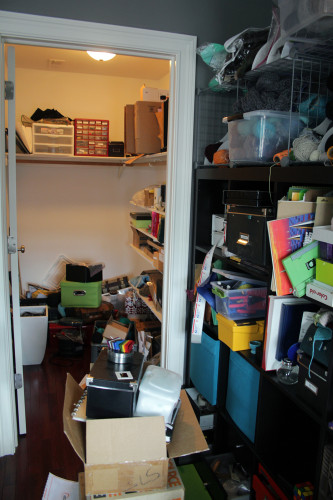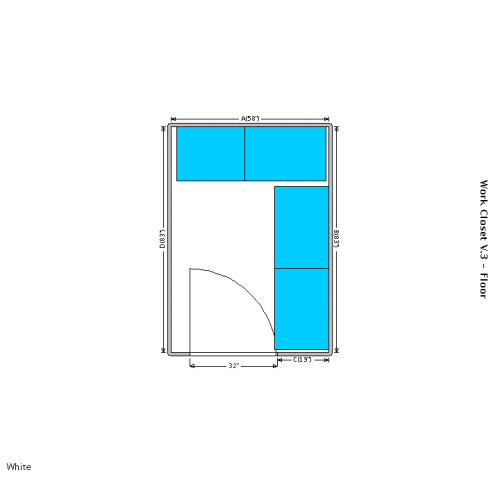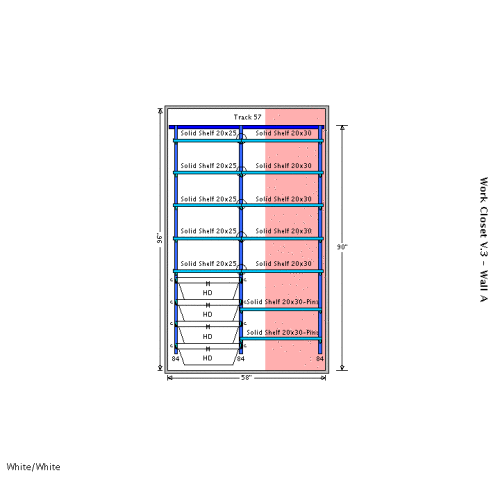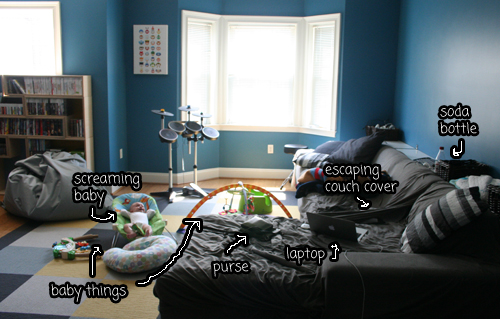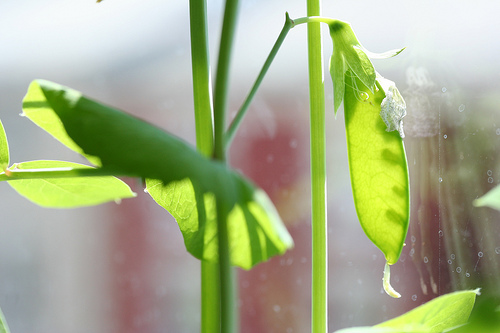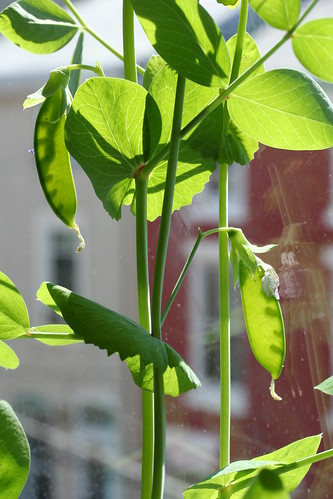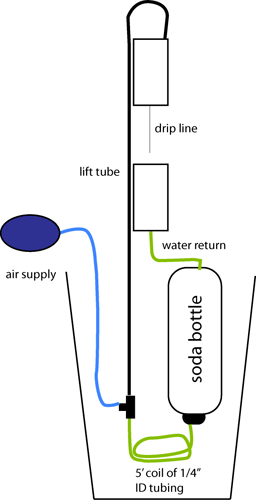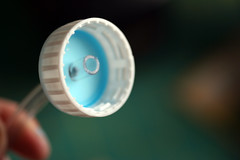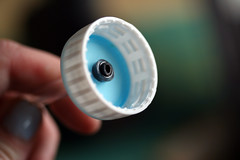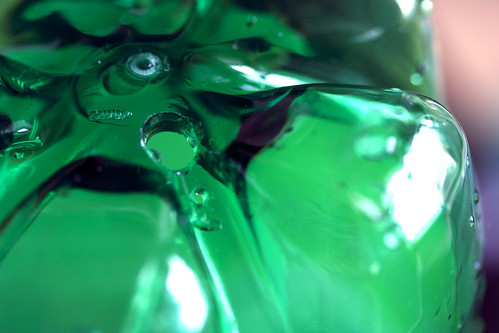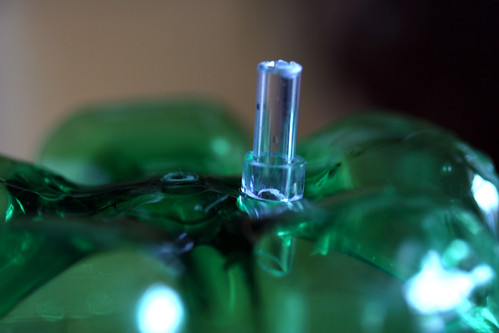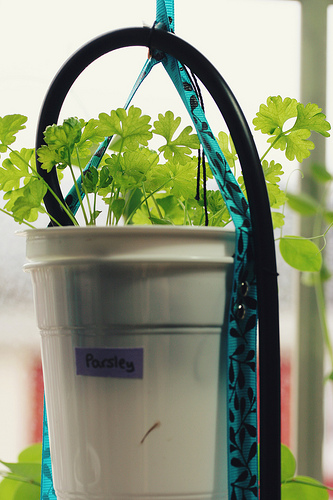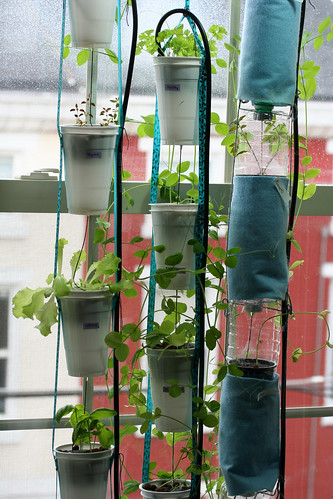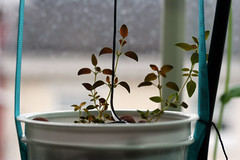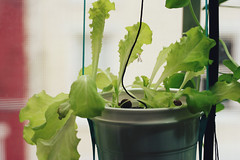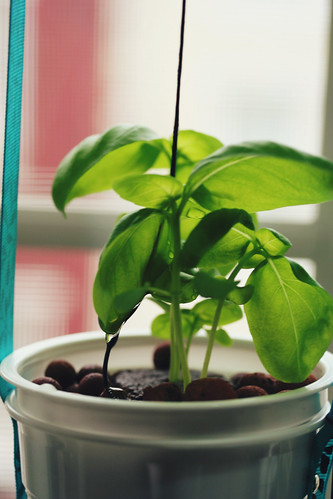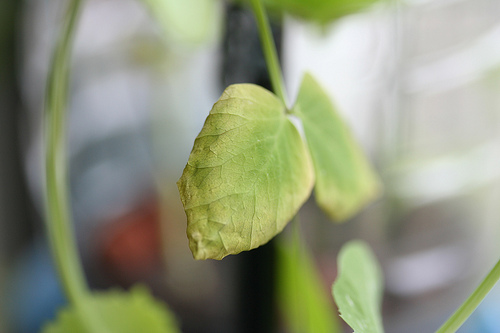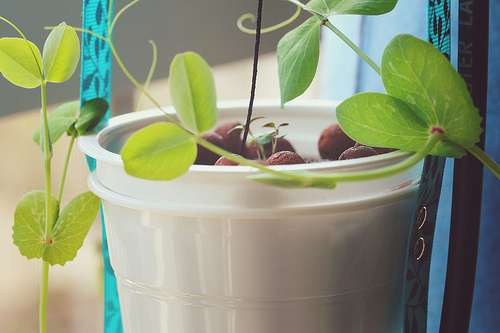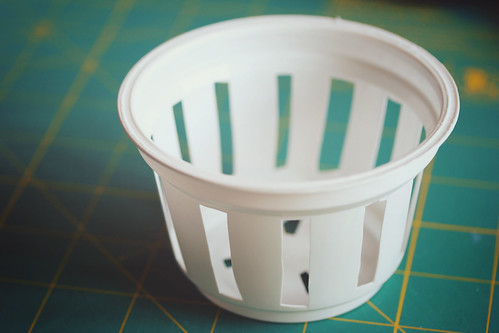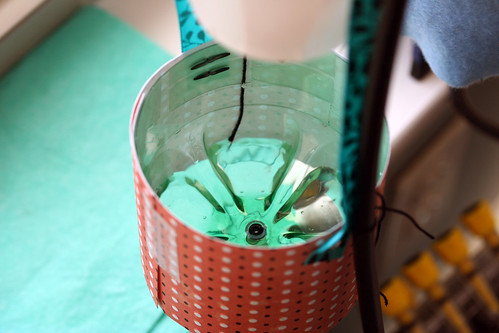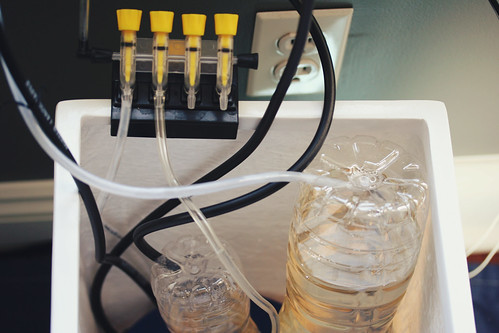It’s my favorite time of year… time for the Container Store elfa sale. This year the closet in my daughter’s room got a makeover. Her closet consisted of hanging organizers from Ikea which were the source of much cursing due to their poor design and awkward center of balance. I have been planning this closet for months waiting for a sale. The day before the sale started I sprung into action, preparing the closet for Operation Shelving 2.0
The closet suffered many of the maladies that my office closet did, namely shelving that was glued to the walls. Thankfully this time there was a little less glue so I was able to get away with just one day of sanding/spackling. I also was a little less picky about them this time around.
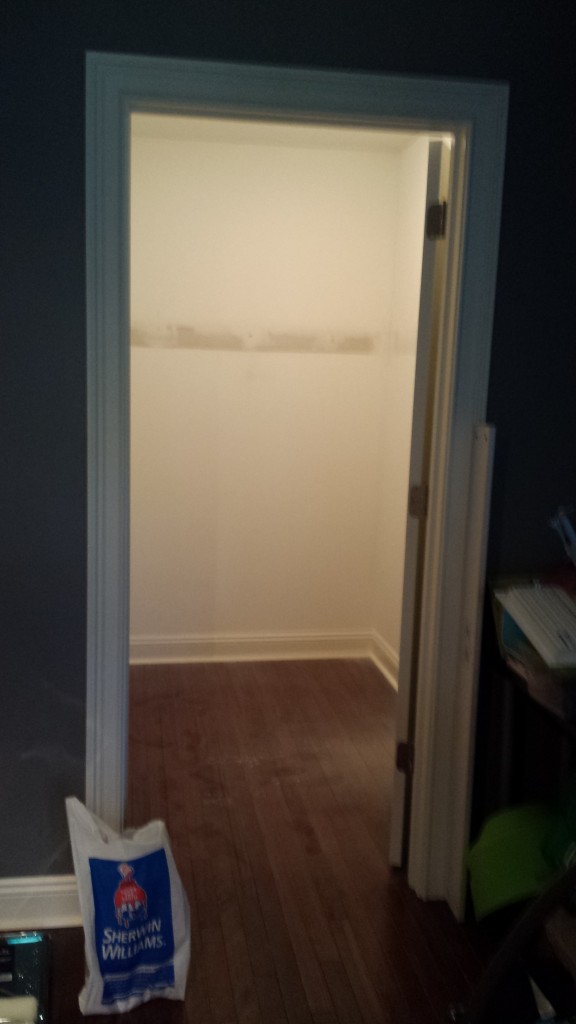
It was at this point that my daughter looked into her empty closet and said “you broke my room. Fix it.” This time I opted to just paint over the patches rather than redo the whole room. Unfortunately I managed to pick the wrong shade of white from our pile of leftover paint. I decided I didn’t care and just left it. If you notice it, you can kindly keep your mouth shut.
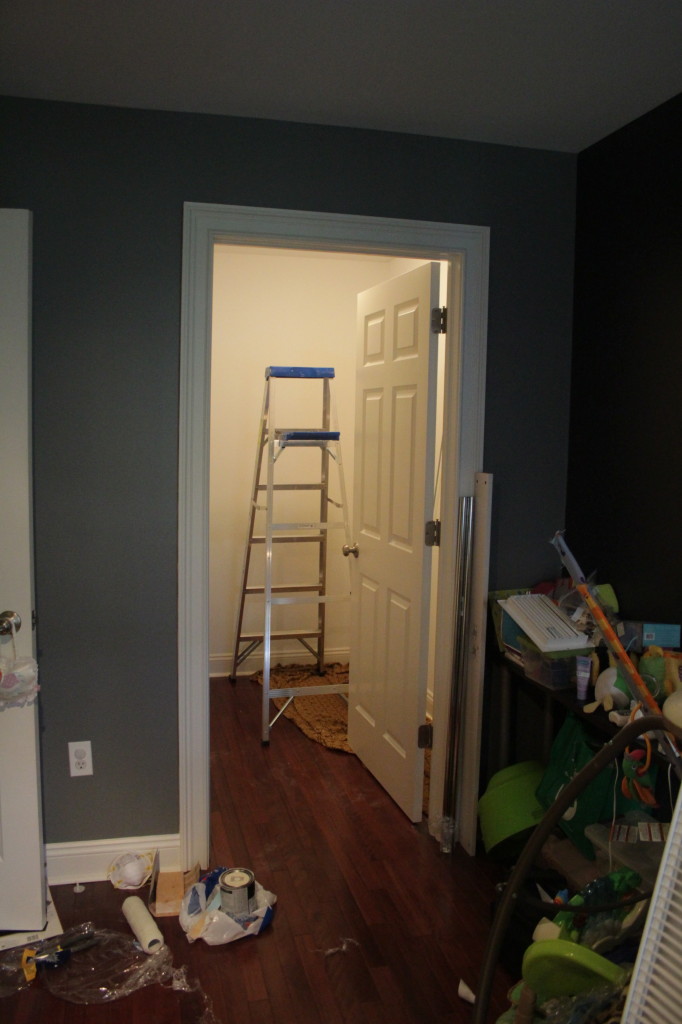
I love the way the elfa system is organized. The whole thing comes in these nice organized bags. The little one has all the mounting hardware, the big one has various smaller elements for the closet and a separate side pocket containing customized instructions for installing the whole thing.
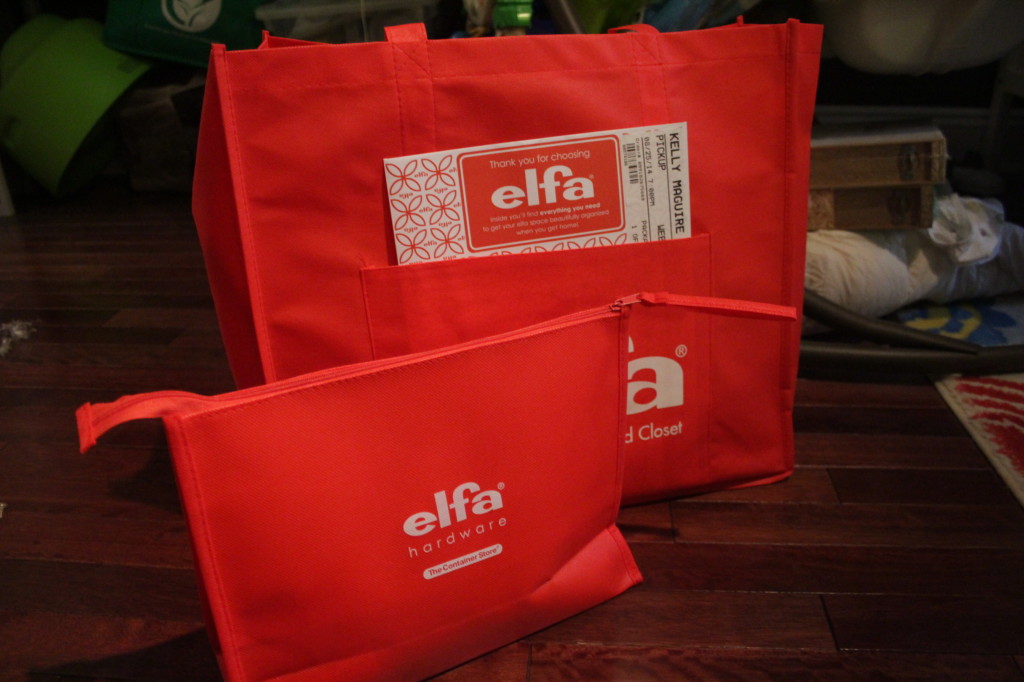
Feeling like an elfa pro after doing my office closet, I happily set to work on the toddler closet. Unfortunately I got a little too confident, and did not measure the height for the top tracks correctly. As a result the hanging standards (vertical bits) overlapped my baseboard molding by about half an inch. Tragedy. I spent a couple hours cursing myself, wringing my hands, and contemplating my two options: rip out the top track (drywall studs and all) and reinstall it higher up, or cut an inch off the bottom of the vertical standards. Since I lack the tools to cut them myself option 2 required a trip out to the suburbs to have them cut. Both options sort of sucked.
After a quick phone call to The Container Store I went with option 2. Thank you to the staff at the Container Store in King of Prussia, who cut the standards for free (despite it being my mistake) and had me in and out of the store in about 10 minutes. I managed to get the standards installed just in time for toddler bedtime.
Day 3 of Operation Closet was spent putting up the shelving and deciding on the spacing I wanted. For this closet I splurged on some of the “nice to have” finishing touches like bracket covers and shelf fascia. Stuff that’s not functional but makes the closet look nice. I didn’t bother with those for my own closet, but they do make things look cleaner and nicer.
As I put everything back in the closet I started culling stuff that was too small. I am a bit ashamed to admit that some of the stuff hanging up had been in the 9-12 month sizes (she’s two and a half now). When all was said and done she had about half as many hanging clothes and an entire additional storage bin full of too small stuff.
So now the toddler’s room is “fixed” and I can now easily find socks that fit her. So ends another fruitful elfa sale. Look out, master bedroom closet. You’re next.
